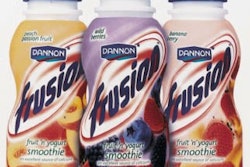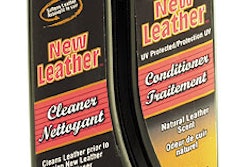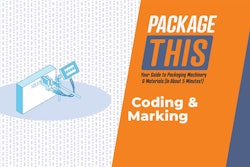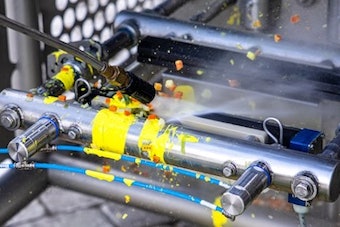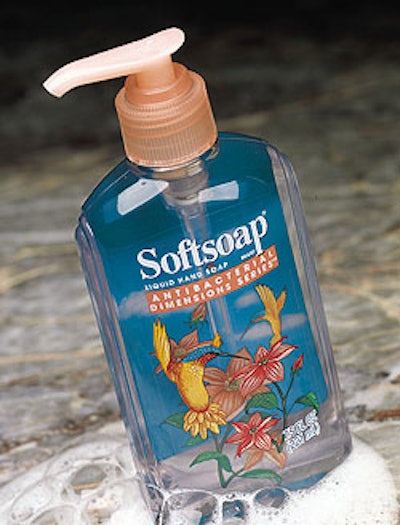
Manufacturers of pesticides and household anti-microbial products are trying to beat back elements of a U.S. Environmental Protection Agency (EPA) packaging standard that has been in the offing since 1994. The standard would require paper, plastic, steel, and all other containers to be in compliance with U.S. Department of Transportation (DOT) packaging requirements for hazardous materials. This will be no problem for many packages and a major problem for others. Also, some pesticide containers would have to meet additional anti-“glug” standards aimed at preventing spills. The latest proposal in this long-running rulemaking came out last October. Some companies and trade associations were so incensed that the EPA agreed to extend the comment deadline not once, but twice, until March 20, 2000. One EPA official refers to the industry comments as the “G-rated version” of what agency officials are hearing over the telephone and in person. Steve Hutton, a manufacturing consultant in packaging and delivery systems engineering for Dow AgroSciences, Indianapolis, IN, says, “We suspect those of our containers that don’t meet DOT standards will meet them once they are tested, but you never know.” These are performance standards that specify drop strength, leak-resistance, hydrostatic pressure, stacking strength, and vibration tests. Testing will cost about $2ꯠ per package and would have to be performed every two years. Bill Levy, distribution services manager for Aventis CropSciences, Research Triangle Park, NC, says most of his company’s packages are already DOT-compliant. But he notes that smaller agricultural chemical companies and anti-microbial product manufacturers may have a much tougher time meeting the DOT tests.
May hit small firms One example is the family of Surround TM Crop Protectant and Surround WP from Engelhard Corp., Iselin, NJ. Both products contain kaolin, a clay derivative, as an active ingredient. The product is essentially a “natural” alternative to chemicals used on fruit trees. Engelhard’s paper packaging has not been tested for DOT compliance, and company officials say it’s not likely the bags could pass the DOT tests. Packages that cannot pass the DOT tests would have to be taken off the market within two years after the EPA issues a final rule. The industry wants more time. Scott Voelker, senior packaging specialist at Monsanto Co., St. Louis, MO, wants to be able to ship non-DOT-compliant nonrefillable packages for four years and refillable containers for six years after any final rule goes into effect. Also at issue is which agricultural chemicals and anti-microbial products may be exempt from new packaging standards. The 1996 Food Quality Protection Act (FQPA) instructed EPA to exempt some anti-microbial compounds from the packaging requirements. The EPA’s October 1999 proposal outlined the agency’s proposed exemption policy.
Exemptions cloudy The FQPA exemption was based on the fact that most anti-microbial products for household and commercial use are nonhazardous. So the EPA shouldn’t worry about how toilet-bowl cleaners and packaging line sanitizers are packaged. Congress gave the EPA three yardsticks to use in writing an exemption. An anti-microbial product should be exempt if it is: a household, industrial, or institutional product; if it is not subject to the EPA solid-waste law called RCRA; if it does not present an “unreasonable adverse effect on the environment.” The first two categories gave no one heartburn. But the third, or at least the way the EPA wants to interpret it, certainly did. The agency categorizes pesticides and anti-microbial products into four toxicity categories, from I to IV, with I being the most toxic. In its October 1999 proposal, the EPA said it believed that most Toxicity I anti-microbials, and that includes 70% of the market, could present “unreasonable adverse effects” and should therefore be subject to the container requirements. That caused an industry blast-off. “The industry was extremely unhappy with that,” admits Nancy Fitz, the EPA official who wrote the proposed rule. Eileen Moyer, director of regulatory affairs for Reckitt Benckiser, Wayne, NJ, says her company “strongly objects” to the EPA interpretation. She says that an anti-microbial that is in the Toxic I category does not necessarily pose a risk to the environment. That determination must be made based on factors other than chemical toxicity.
Exceptions to exemptions John DiFazio, senior counsel to the Chemical Specialties Manufacturers Assn. (CSMA), states that throughout the entire debate in Congress on the FQPA, the anti-microbial exemption was predicated on just the first two factors. “At the last minute, in an act of good faith, the regulated community allowed the insertion of an exception ‘to prevent an unreasonable adverse effect on the environment,’ a rigorous legal standard,” explains DiFazio. “It is unconscionable of EPA not only to disregard the clear intent of Congress, but also to renege on the agency’s final negotiating position.” The Biocides Panel of the Chemical Manufacturers Assn. expresses even more poetic indignation. It calls the EPA interpretation “a dramatic evisceration of the statutory exemption.” Exemptions from the container standards for agricultural pesticides are also an issue, though not quite as fiery. In the October 1999, proposal, the EPA said that pesticides meant for agricultural use would be subject to the packaging standards only if they met one of three criteria: the product is classified either Tox I or Tox II; the product is sold in a container size holding more than either 5 L or 5 kg; the product is intended for outdoor use; and the label includes at least one of the specified environmental hazard statements. The flashpoint here, as is the case for anti-microbials, is the environmental factor. Companies like Aventis and Dow AgroSciences have no problem with the 5 L/kg cutoff, or the Tox I/II application. But Levy of Aventis, says that environmental hazard statements don’t necessarily mean that a pesticide poses problems for either ground water or wildlife. That is because the warning is dictated by the product’s half-life, meaning how long it persists in the soil. But the application rate for an agricultural chemical may be so low that the half-life is beside the point. In addition, the EPA negotiates these environmental hazard statements on a product-by-product basis. “Sometimes a company will accede to an environmental warning in return for the EPA making a concession of its own,” Levy explains.
Simple standards Given all the abuse the EPA is taking over the issue of exemptions, the agency can be excused for wanting to make the standards themselves as simple as possible. And what could be simpler than telling manufacturers that they should meet the packaging standards that the DOT already has in place for hazardous materials? In fact, industry groups were the ones that requested the agency adopt DOT standards rather than trying to reinvent the wheel. These standards cover compatibility, closures, venting, and filling limits and are modified depending on the hazard level of the chemical. Packaging Group I represents materials of greatest hazard; Group III is the least hazardous. Most pesticides are in Group III; far fewer are in II, and hardly any are in I. To these standards, the EPA would add some specific packaging standards for “pesticides” such as to prevent dripping and require pouring in a continuous, cohesive stream—the so-called non-“glug” requirement. Some pesticides, however, are in none of these groups because they are so safe. The EPA would make these pesticides (if they are sold in packages larger than 5 L/kg) subject to Group III packaging standards. This would hook in a lot of pesticides and anti-microbial products that have been subject to few regulations in the past. These manufacturers have not been forced to review their packaging because they were not considered DOT hazardous materials. Requiring pesticides not now covered by DOT regulations to comply with Class III packaging standards (affecting companies like Englehard, for example) would create a “large increase in potentially applicable testing requirements,” admits EPA. Also, because of DOT test requirements, certain pesticides that would have had their packaging tested under the 1994 proposal would need even more tests under the October 1999 proposal adopting the DOT system. That is particularly true for nonrefillable containers and minibulk containers. The EPA’s Fitz says the agency expects to finalize the pesticide container rule within the next year. c




